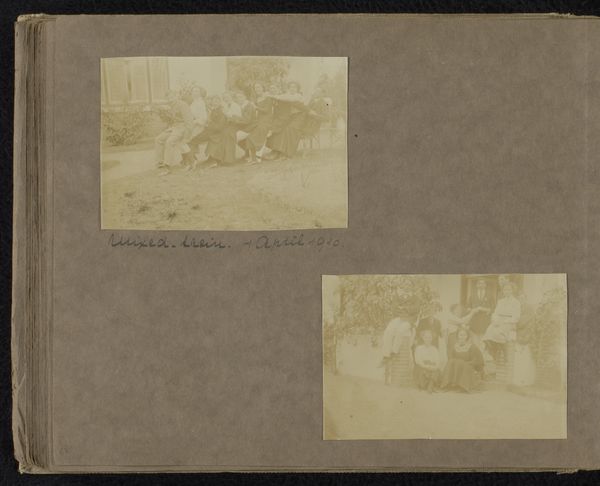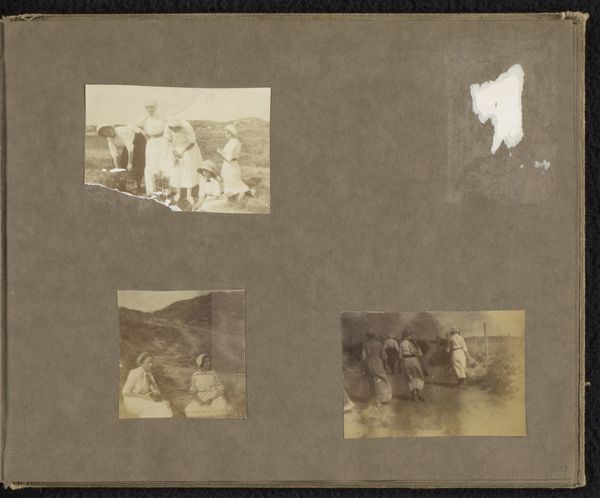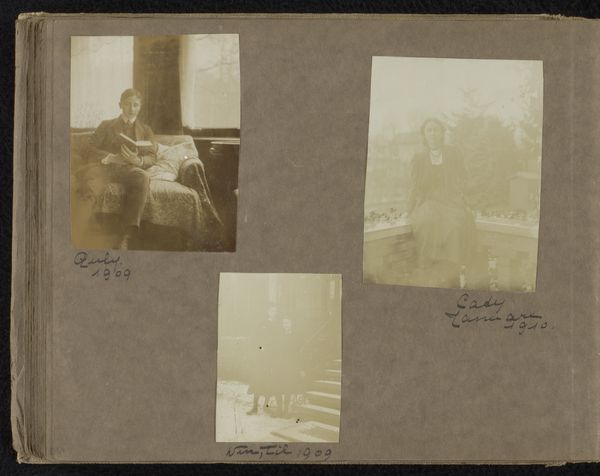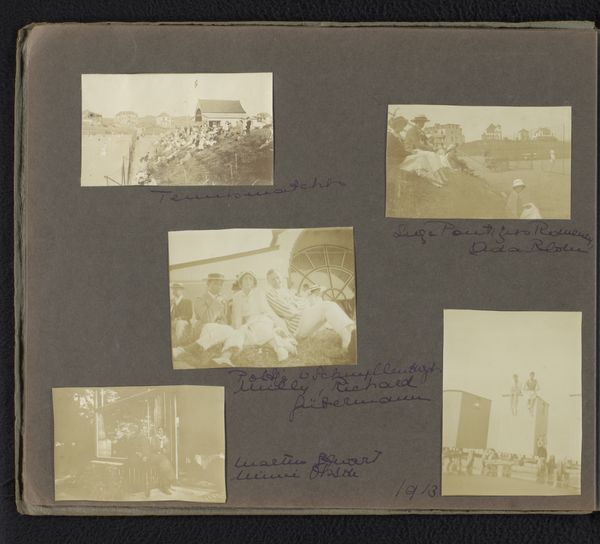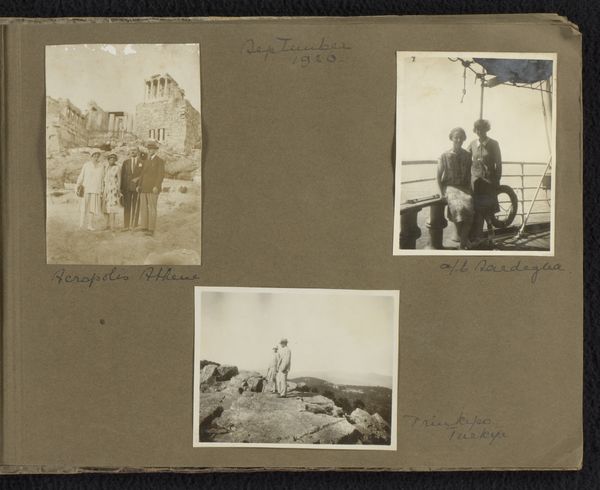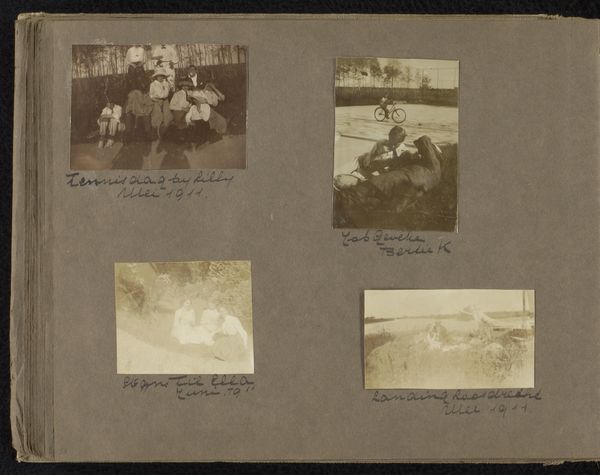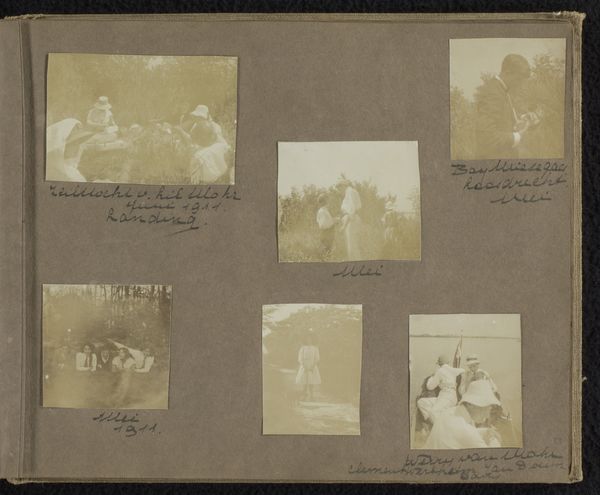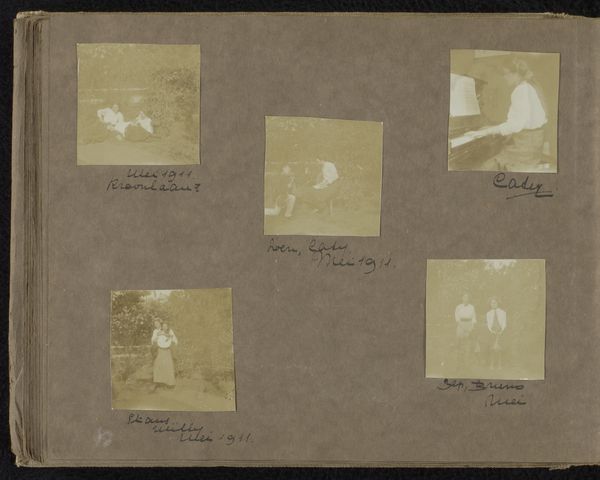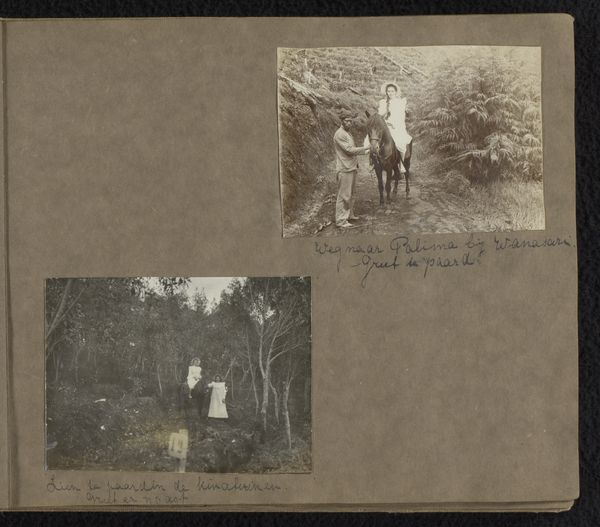
Twee foto's van Guly Boissevain en een jongen genoemd Gus in een boot 1910
0:00
0:00
photography
#
portrait
#
photography
#
group-portraits
Dimensions: height 203 mm, width 253 mm
Copyright: Rijks Museum: Open Domain
Editor: We're looking at two photographs, both from 1910, titled "Twee foto's van Guly Boissevain en een jongen genoemd Gus in een boot." They appear to be silver gelatin prints. They evoke a sense of leisurely upper-class life. What stands out to you, looking at these? Curator: What interests me is the very act of photography itself at this time. Silver gelatin prints meant a certain level of technology, industrial production in the chemical process, and thus access and consumption. These are not formal portraits; they have a snapshot aesthetic. The relaxed poses suggest leisure and affluence - who had the time and resources for boating and picture taking? And consider the distribution - these images end up not in a gallery, but within the family album. Editor: So, it’s not just the image itself but the material reality of its production and its role in society that’s significant? The photograph itself as a produced commodity, then. Curator: Precisely. Think of the labor involved in creating and using the technology needed for these photographs compared to painted portraits that were in vogue before this. Photography democratized image making, making portraiture accessible for a growing number of people and therefore transforming it in unexpected ways. The ease and accessibility is a departure, wouldn't you agree? Editor: Absolutely, I see the shift in accessibility now, in comparison to traditional art forms. So, by focusing on the materials and processes, we can understand broader social and economic shifts reflected in these snapshots. I see what you mean, I had been seeing it more at face value. Curator: Good. Considering art from a materialist perspective urges us to ask these questions and challenge traditional views about art, about labour, class and access. Hopefully you’ll keep these considerations when encountering all types of works, in your own explorations as an artist or as a curator.
Comments
No comments
Be the first to comment and join the conversation on the ultimate creative platform.
